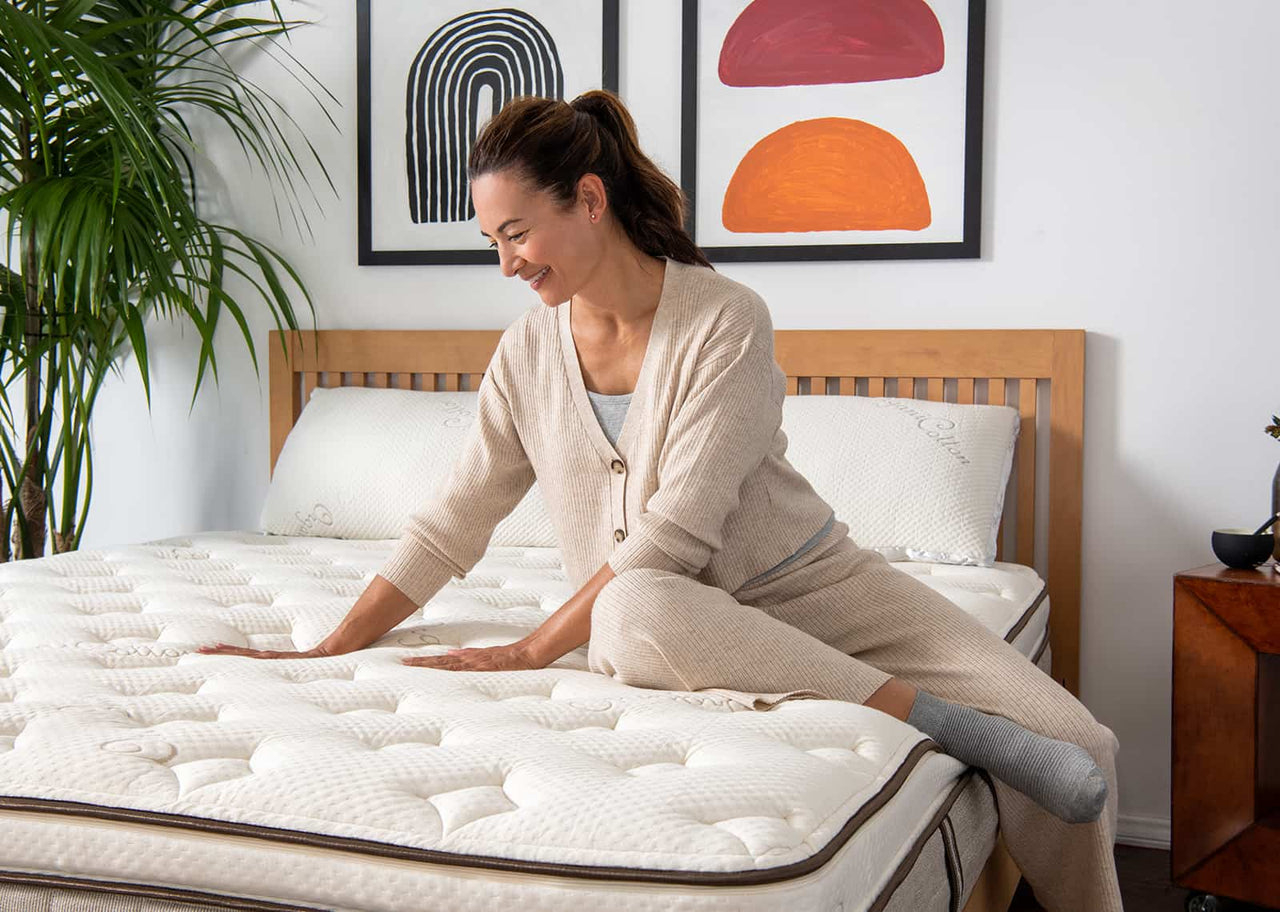Mattress Firmness: Your Guide to Finding the Perfect Mattress

The right mattress firmness can mean the difference between waking up refreshed or tossing and turning all night. It’s all about finding the right balance. Your mattress should support your body, keep your spine aligned, and relieve pressure points while you sleep.
People generally sleep better when their mattress firmness suits their needs. Knowing what firmness level works best for you can help you get better rest and wake up feeling great.
Understanding the Mattress Firmness Scale
The standard mattress firmness scale ranges from 1 to 10, with 1 being extremely soft and 10 being extremely firm. Most mattresses fall between 3 and 8 on this scale. Here's a detailed breakdown of the different firmness levels:
Extra Soft (1-2): These mattresses allow significant sinking and contouring. They're rare in the market since they typically don't provide adequate support for most sleepers.
Soft (3-4): Soft mattresses offer deep contouring and pressure relief. Our Sparrow Signature Hybrid mattress in Plush configuration exemplifies this category, providing gentle support while allowing you to sink into the comfort layers.
Medium (5-6): This popular firmness level balances comfort and support. The standard configuration of the Sparrow Signature Hybrid hits this sweet spot, making it suitable for various sleep positions and body types.
Medium-firm (6-7): These mattresses provide solid support while maintaining comfort. Our Owl Natural Latex Hybrid in medium firmness falls into this category, offering excellent spinal alignment.
Firm (7-8): Firm mattresses minimize sinking and maintain a flat sleep surface. The Owl Natural Latex Hybrid in firm configuration delivers this level of support.
Extra Firm (9-10): These mattresses have minimal give and maintain a very rigid surface. They're less common and typically recommended only for specific medical conditions or personal preferences.
How Body Weight Affects Firmness Choice
Your body weight plays a big role in finding the right mattress firmness:
Under 130 pounds: Softer mattresses (3-5 on the firmness scale) usually feel best. Since lighter sleepers don’t sink as much, a softer surface helps provide the right amount of contouring and pressure relief.
130-230 pounds: A medium to medium-firm mattress (5-7) tends to be the sweet spot. This range offers a good mix of support and comfort for most sleep positions.
Over 230 pounds: Firmer mattresses (7-8) work best to prevent sinking too much and to keep the spine properly aligned. The extra support helps distribute weight evenly and reduces pressure points.
Sleeping Positions and Optimal Firmness
Different sleep positions put pressure on different areas of the body, so the right mattress should provide the right balance of support and cushioning:
Side Sleepers: Since side sleeping puts pressure on the shoulders and hips, a soft to medium mattress (4-6) is best. It allows these areas to sink while still supporting the waist and lower back. Our Sparrow Signature's plush option is a great choice for side sleepers.
Back Sleepers: Back sleepers need even support to maintain natural spine alignment. A medium-firm to firm mattress (6-8) usually works best. The Owl Natural Latex Hybrid in medium or firm offers excellent support for back sleepers.
Stomach Sleepers: To prevent the midsection from sinking too much and straining the lower back, stomach sleepers need a firmer mattress (7-8). The firm configuration of the Owl provides the support needed for stomach sleepers.
Combination Sleepers: If you switch positions during the night, a medium to medium-firm mattress (5-7) is ideal. It provides enough versatility to support different sleep positions while making it easy to move around.
Health Conditions and Firmness Selection
Your mattress firmness can make a big difference if you have certain health conditions:
Back Pain: A medium-firm mattress (6-7) is often the best choice. Research in the Journal of Chiropractic Medicine found that medium-firm mattresses helped reduce chronic lower back pain.
Joint Pain: If you have arthritis or other joint issues, a soft to medium mattress (4-6) can help by cushioning sensitive joints while still providing support.
Sleep Apnea: A medium-firm to firm mattress (6-8) can promote better breathing by helping you maintain an optimal sleep position.
Fibromyalgia: Soft to medium mattresses (3-6) tend to be best for fibromyalgia, offering gentle pressure relief for sensitive areas.
Testing and Adjusting Mattress Firmness
Finding the right firmness often requires practical testing:
Sleep Trial Periods: At Nest Bedding, we offer a 365-night sleep trial, allowing you to thoroughly test your mattress in real-world conditions.
Comfort Layer Exchange: Our Lifetime Renewal Exchange program lets you swap comfort layers to adjust firmness even years after purchase.
Mattress Toppers: Adding a topper can modify firmness. A soft topper on a firm mattress increases cushioning, while a firm topper can add support to a soft mattress.
Signs Your Mattress Firmness Needs Adjustment
Watch for these indicators that your mattress firmness isn't optimal:
-
Morning stiffness or pain that improves after moving around
-
Difficulty finding a comfortable position
-
Tossing and turning throughout the night
-
Waking up tired despite adequate sleep time
-
Visible sagging or indentations in the mattress surface
Making Your Final Decision
Consider these factors when selecting mattress firmness:
-
Start with your primary sleeping position
-
Factor in your body weight
-
Account for any health conditions
-
Consider your partner's preferences if sharing the bed
-
Look for adjustable options like our exchangeable comfort layers
Conclusion
Choosing the right mattress firmness involves carefully considering your sleeping position, body weight, health conditions, and personal preferences. The ideal firmness provides proper support while maintaining comfort throughout the night.
Here at Nest Bedding, our range of mattresses with adjustable firmness options and generous trial period makes finding your perfect match easier. Take advantage of sleep trials and comfort layer exchange programs to fine-tune your selection until you achieve optimal sleep quality.




